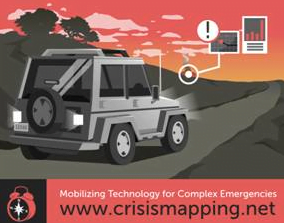Ed. note: The report Disaster Relief 2.0: The Future of Information Sharing in Humanitarian Emergencies analyzes how the humanitarian community and the emerging volunteer and technical communities worked together in the aftermath of the 2010 earthquake in Haiti, and recommends ways to improve coordination between these two groups in future emergencies. The UN Office for the Coordination of Humanitarian Affairs (OCHA), together with the United Nations Foundation and Vodafone Foundation Technology Partnership, commissioned the report, which was researched and written by a team at the Harvard Humanitarian Initiative.
The Disaster Relief 2.0 Blog Series provides a public forum for people from both the humanitarian and volunteer and technical communities to discuss ideas in this report and the future of disaster relief.
You can follow conversations about the report on Twitter using the hashtag #DisasterTech and on the UN Foundation’s Facebook page.
Humanitarian Information: Year Zero?
By Paul Currion
The Disaster Relief 2.0 report contains valuable insight into how the use of information to support relief operations has changed since we published ICT4Peace in 2005. What it doesn’t cover is how we got from there to here; the use of social media in Haiti is never placed in historical perspective. This creates the risk that the new volunteer and technical communities will repeat past mistakes and relearn past lessons. For example, Jacobo Quintanilla says in his blog post in this very series:
“We learned in Haiti that trying to introduce new technologies during an active operation can be unnecessarily frustrating, ineffective, and even a disruptive exercise.”
Actually we learned that in Kosovo in 1999, and learned it over in subsequent responses. I’m not knocking Jacobo – I agree with nearly everything he says here – but this illustrates the problem of treating 2010 as Year Zero in technology use for emergency response. The only reference that Disaster Relief 2.0 report makes to what came before is a quote from yours truly, circa 2001:
“…rapid advances in ICT have led to a proliferation in the quantity of information available to humanitarian workers… but not necessarily any corresponding improvements in their abilities to usefully handle that information.
A lot has changed since I wrote that, but the basic problem hasn’t. The effectiveness of data-driven decision-making has little to do with the quality of the data, and more to do with the quality of the decision-making. One reason why some volunteer and technical communities have struggled to make their products relevant to actors on the ground is because they lack understanding of how those actors use information.
The rate of technological change has been so rapid that few people are able to stay on top of new developments, especially those who actually respond to disasters. Humanitarian organisations therefore rely on external expertise to tell them whether a particular technology will be useful and appropriate. However they have no way to know if that expertise is rooted in the reality on the ground, which can often lead to poor decisions about where to invest their resources.
Social media offers opportunities to improve the effectiveness of the humanitarian community, and the Disaster Relief 2.0 report offers recommendations to help the humanitarian community use those technologies effectively. In all the excitement around these new projects, however, let’s remember that this is a management problem – not a technology problem.
Paul Currion is a consultant specialising in information management for humanitarian operations, blogging at www.humanitarian.info. Since helping to establish the Humanitarian Information Centre concept for OCHA, he has been a Cluster Information Manager, WFP Regional Information Manager, ICT Initiative Manager for the NGO Emergency Capacity Building Project, and a Sahana Project Management Committee member from 2005-2010.
